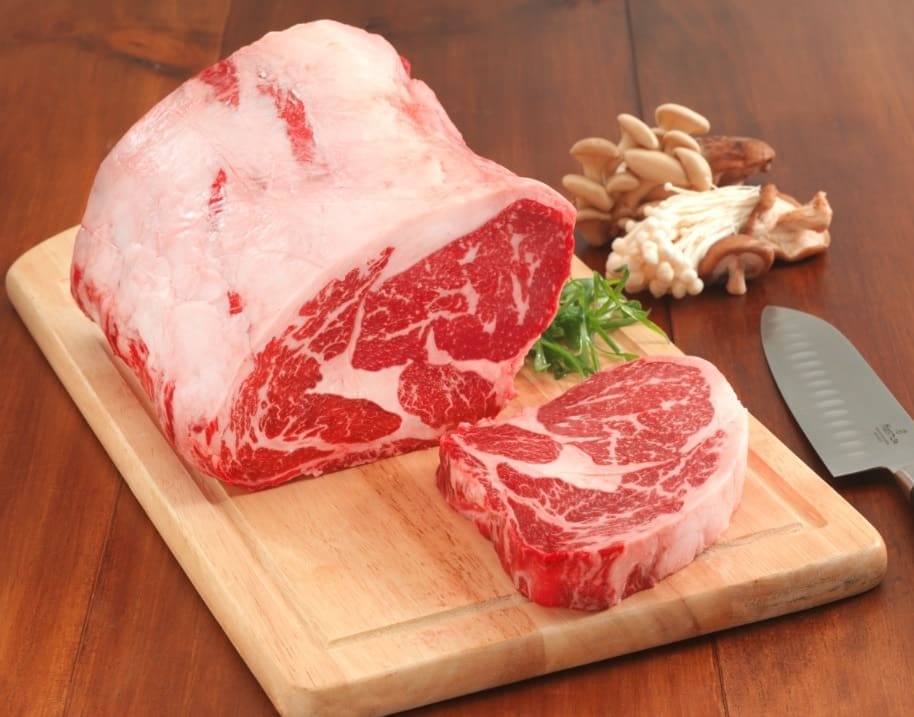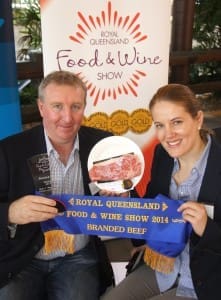Location: Bell Qld (Aronui); Comet, Qld (Goonoo)
Capacity: 33,500 head (17,500 Goonoo, 16,000 Aronui)
2014 cattle turnoff (company-owned yards only): 35,000 head
2003 Top 25 position: 4 (32,500 capacity)
 HEAVY exposure to lotfeeding, both through company-owned and custom feedyards, is of fundamental importance to branded beef supply chains managed by the world’s largest beef producer, the Australian Agricultural Co.
HEAVY exposure to lotfeeding, both through company-owned and custom feedyards, is of fundamental importance to branded beef supply chains managed by the world’s largest beef producer, the Australian Agricultural Co.
In addition to its two company-owned yards in Queensland, AA Co is among the nation’s largest users of custom feeding space, with 22,800 cattle (including Wagyu, 70-day and 100-day cattle for its 1824 brands) currently on feed in six other yards stretching from southern NSW well into Queensland.
It’s all part of the company’s long-term aim of transforming itself from being a ‘cattle operation’ simply selling livestock to other processors and exporters, to a supply chain business, providing premium beef under AA Co’s own brands to more than 20 countries.
Within the past year, AA Co has transitioned into a position where 100 pc of its fed cattle (either custom or company-fed) now go into an AA Co beef carton. Previously, some fed cattle were still sold into the broader grainfed cattle market, via dedicated processors/exporters, but all those cattle now remain within the company’s own supply chain.
AA Co has had a long connection with grainfed beef production, establishing its Goonoo feedlot near Comet in Central Queensland in 1991. Goonoo today holds a license for 20,000SCU, with current built capacity of 17,500 SCU.
The company’s second feedlot, Aronui, near Bell on Queensland’s Darling Downs, has recently added pens accounting for an additional 1000 head, taking its built capacity to 16,000 head. That’s happened as a result of recent regulatory changes in Queensland, discussed elsewhere in this feature.
Aronui was bought by AA Co from industry pioneer, Dugald Cameron in 2002. As one of the pioneering feedlots in Australia, including feeding some of the first Wagyu crossbreds in the country in the early 1990s, Aronui is comprehensively covered in the recently-published book, “Grainfed: The history of the Australian lotfeeding industry.” Click here to access purchase details.

Sample of AA Co’s Darling Downs Wagyu beef produced from the company’s +300-day longfed F1 Wagyu program
As AA Co has embraced the Wagyu branded beef opportunity over the past ten years, it has dramatically changed the type of cattle and feeding programs seen at both of its company-owned yards.
With the exception of a handful of 70 or 100-day cattle fed occasionally on an opportunistic basis, today, both Aronui and Goonoo are 100 percent occupied by Wagyu feeders, ranging from F1 to Fullblood. Most of those are bred on the company’s extensive breeding and growing properties in northern Australia.
Collectively and individually, Goonoo and Aronui represent probably the largest Wagyu cattle feeding operations in the world. The largest Wagyu feedlots in Japan, for example, feed no more than 10,000 head.
Because AA Co’s company-owned feedlots now feed Wagyu exclusively, annual turnover of cattle in those yards is understandably quite modest, compared with similarly-sized yards feeding for shorter periods. Aronui and Goonoo account for a turnover of about 35,000 head each year, with F1s typically fed 300+days, and Fullbloods 500+ days.
General manager of feedlots and Wagyu, Greg Gibbons, said across both company-owned yards and outside custom feeding operations, AA Co currently has 43,000 head of Wagyu on feed across Eastern Australia, all destined for company-owned and managed brand programs including Darling Downs, Master Kobe (marbling score 9s), Takumi (marbling score 7s and 8s) and Kobe Cuisine.
The company is responsible for about 50 percent of Australia’s entire Wagyu beef exports.
In its original form, Goonoo was used primarily for feeding 100-day cattle for AACo’s 1824 brand program, but all that program’s feeding has now been outsourced to custom-feeders, in order to accommodate AA Co’s expanding Wagyu business.
Feeder cattle
Despite its immense breeding capacity itself, AA Co still buys a lot of feeders, especially for its F1 and Fullblood Wagyu programs, to meet growing world demand. It also sources some 100-day and 70-day feeders, although the company as a whole would now be 60 percent self-sufficient in feeder cattle, in most categories.

AA Co’s Hamish McKerrow and Sabina Kindler with the company’s Wagyu beef championship winner at Brisbane’s Branded Beef competition last year
In the Wagyu segment, for example, the company cultivates long-term strategic alliances with breeders of quality Wagyu cattle from Central Queensland all the way to Victoria. Those ‘buy back’ partnerships include the sharing of genetic knowledge, access to AA Co’s elite Westholme Wagyu genetic material, comprehensive carcase feedback and other support.
AA Co’s dedicated backgrounding properties in Central Queensland, including Glentana, near Springsure, and Collie Blue, are now used exclusively to background company-bred and bought Wagyu feeders before feedlot entry.
AA Co benchmarks not only its company-owned yards, but also those six external yards where it takes custom-feeding space. The in-house benchmarking system monitors performance across a range of parameters, including daily gain, feed conversion and carcase performance.
So what lies ahead for AACo’s grainfed operations? The sheer scale of its exposure to custom feeding in outside yards must raise questions about whether the company will ultimately build or buy a third yard of its own.
At the moment, the use of custom feeding is allowing AA Co to undertake long-term strategic supply partnerships with selected international customers, without the expense of buying or building a third yard. But once the focus on the Darwin processing plant is bedded down, and investment capital becomes available, that may change, some onlookers suggest.
This feature is brought to you by Lallemand Animal Nutrition.
- Click here to return to Top 25 Lotfeeders table.
- Click here to return to Top 25 Lotfeeders introductory article.

Looking forward to viewing the top 5 feedlots